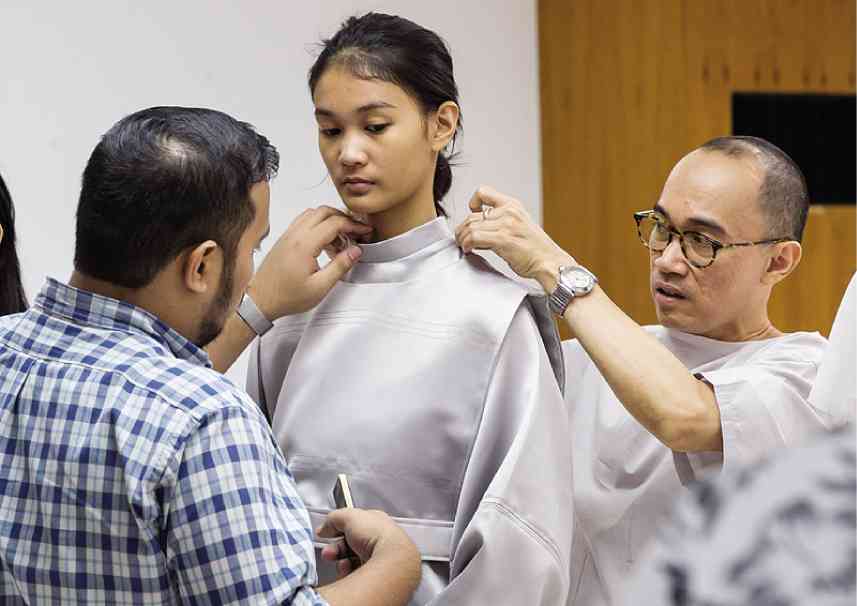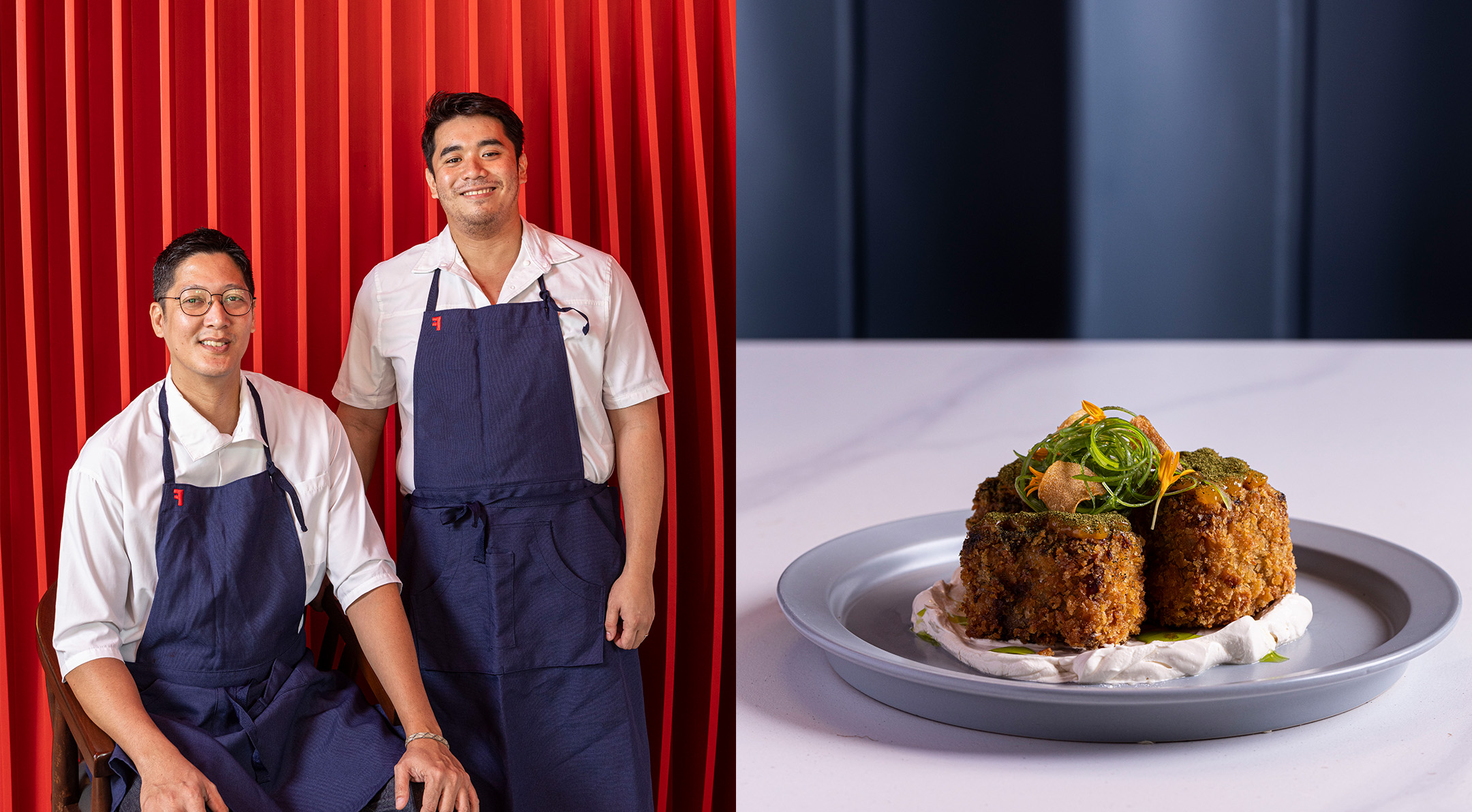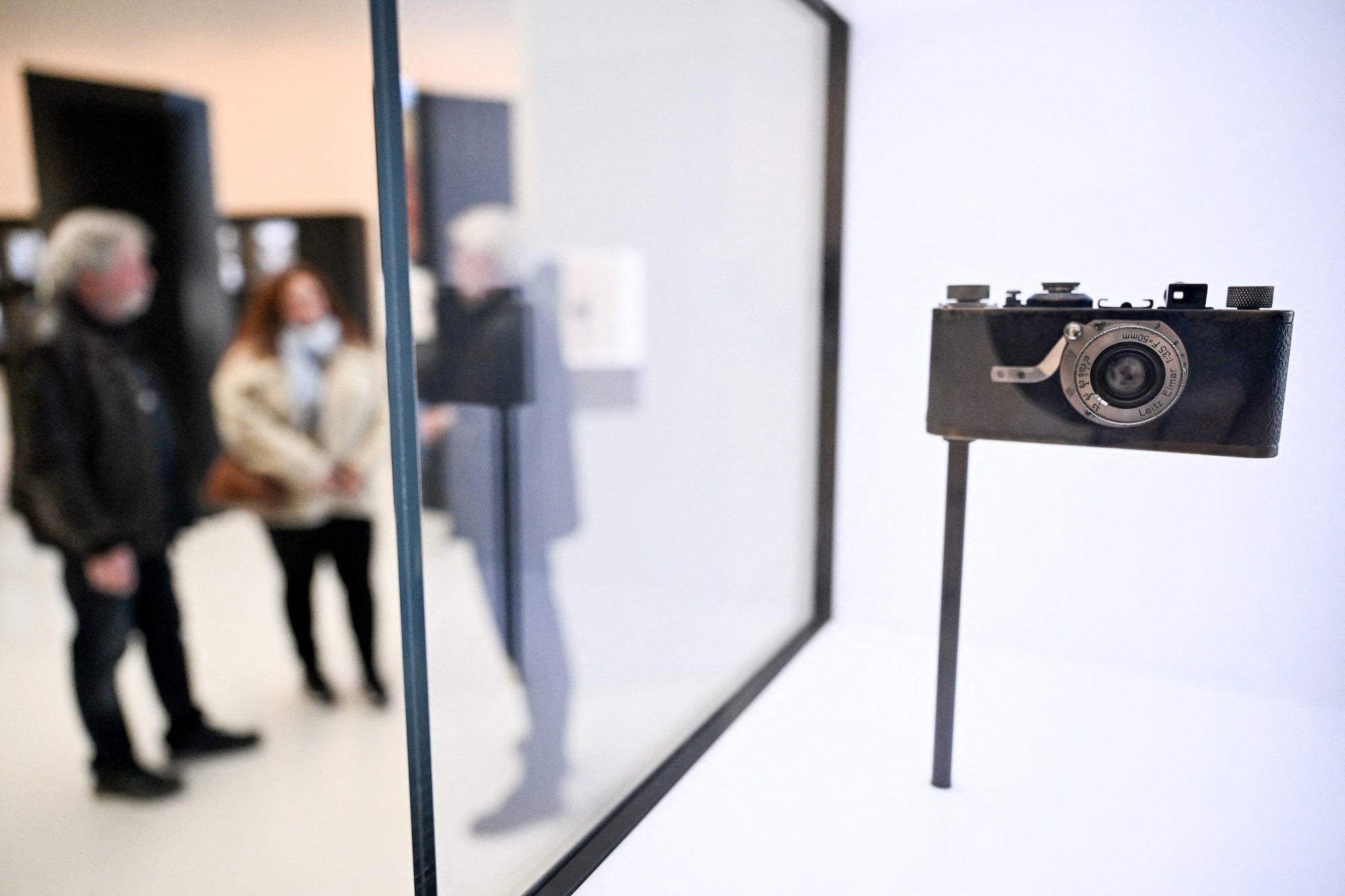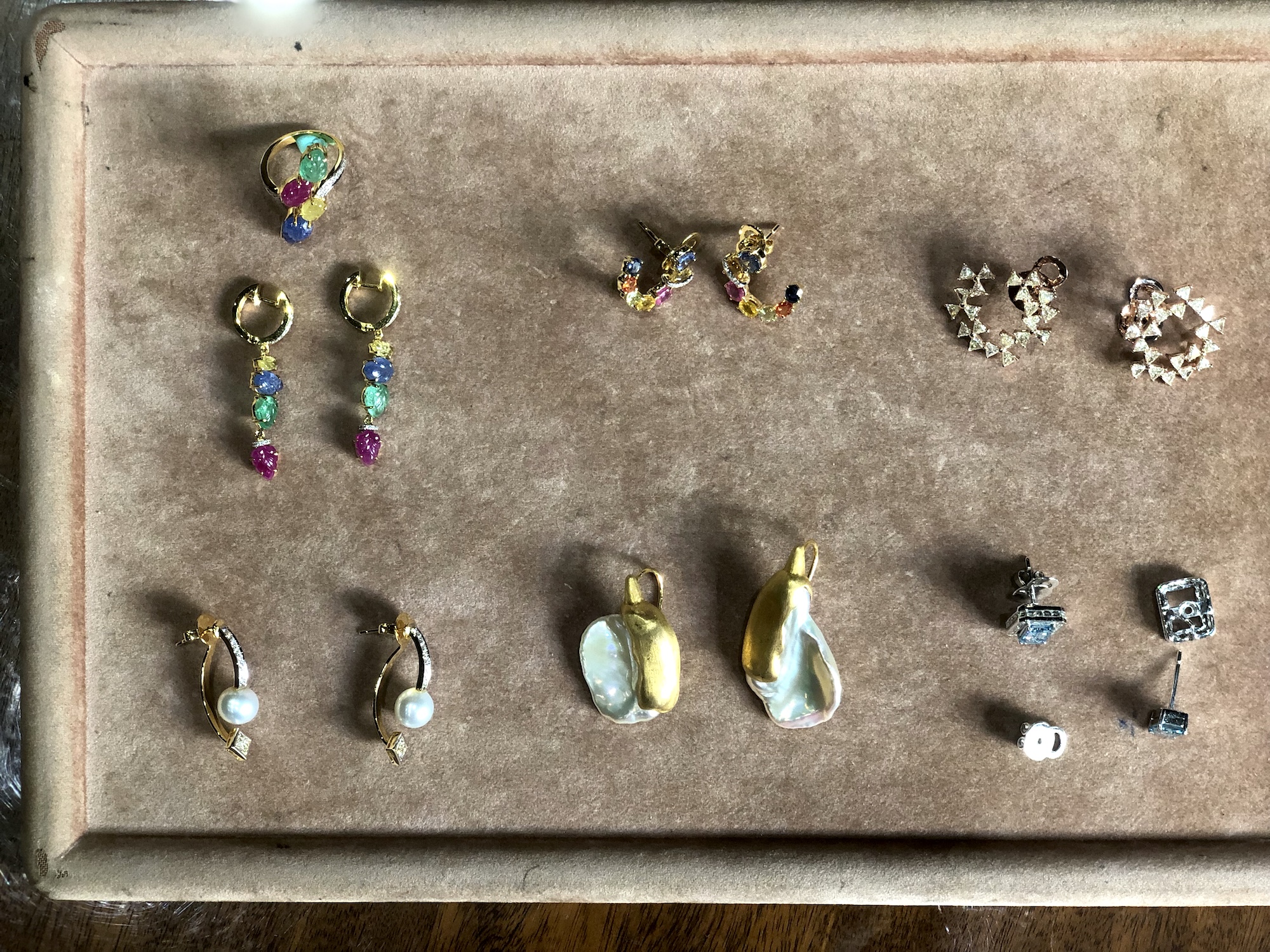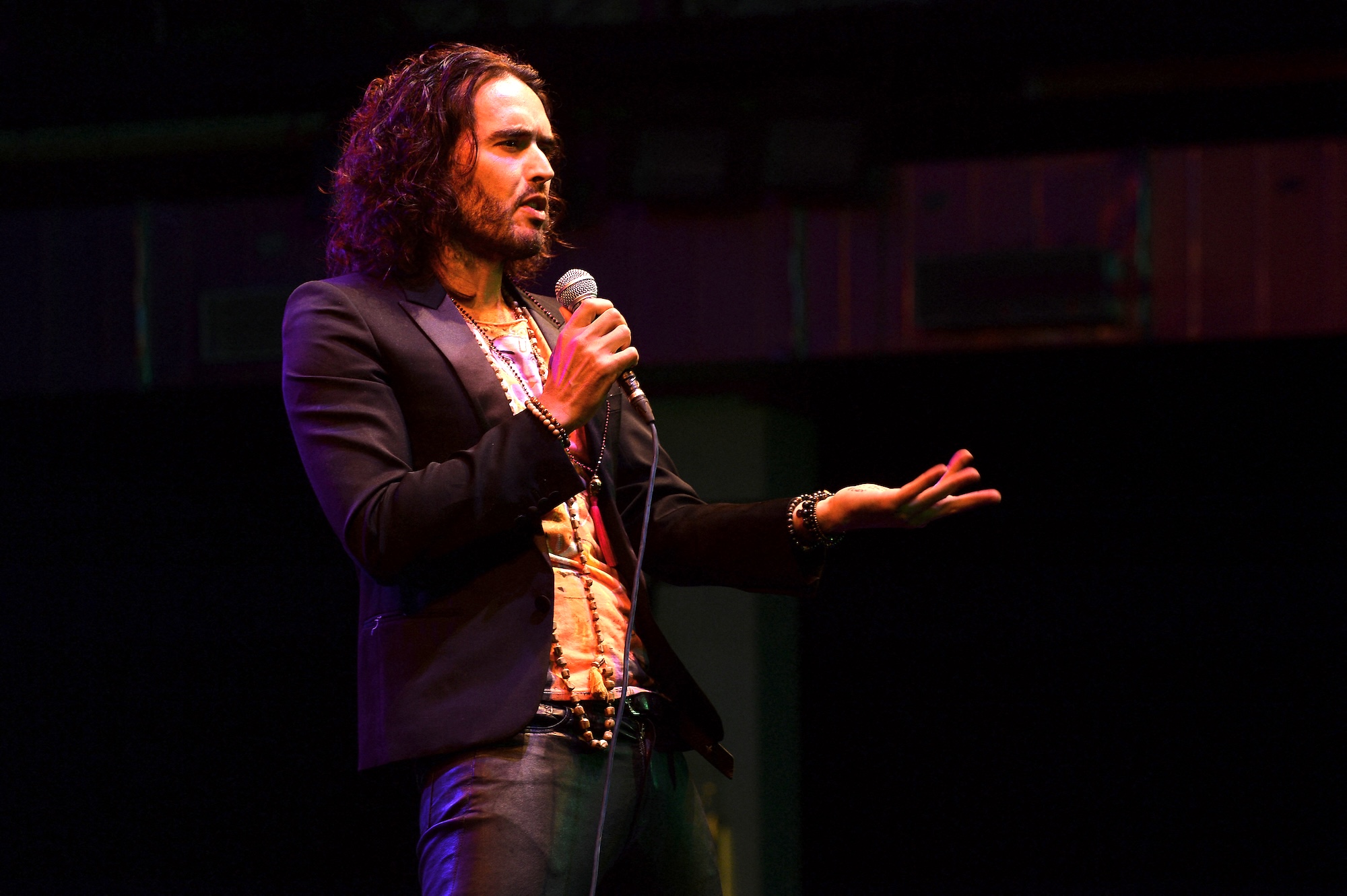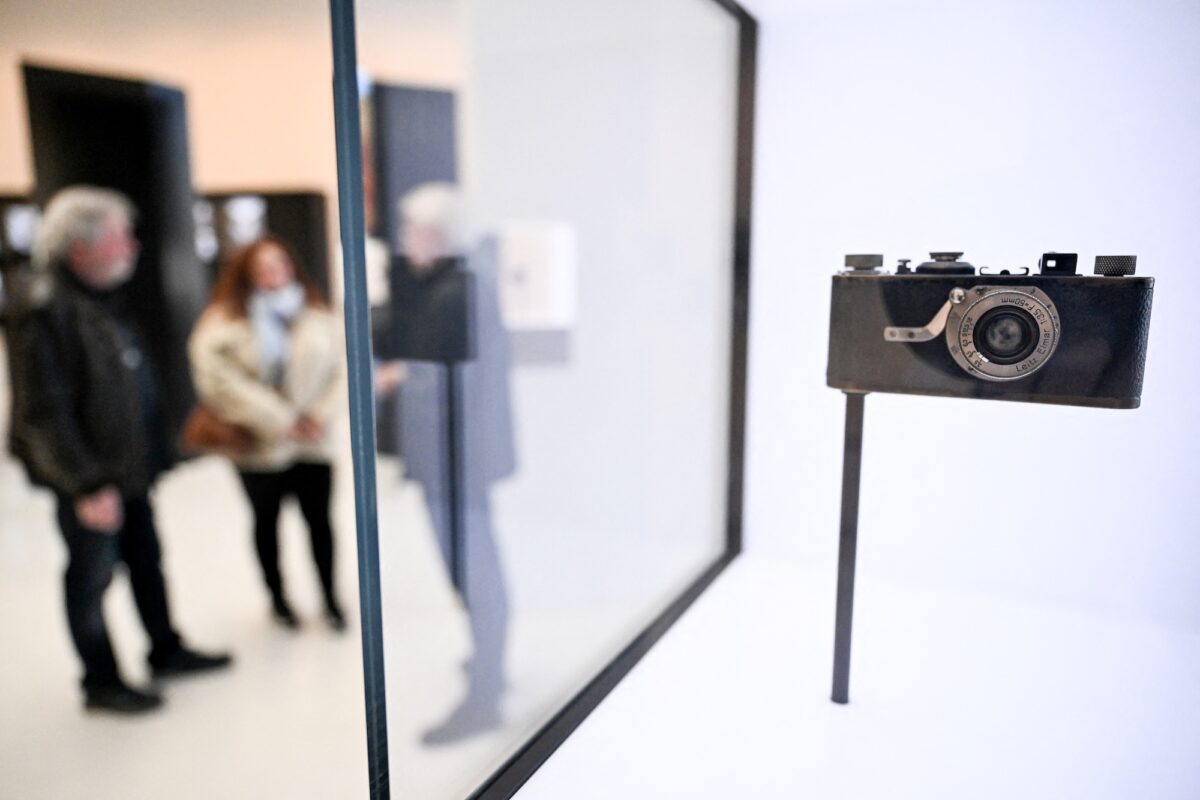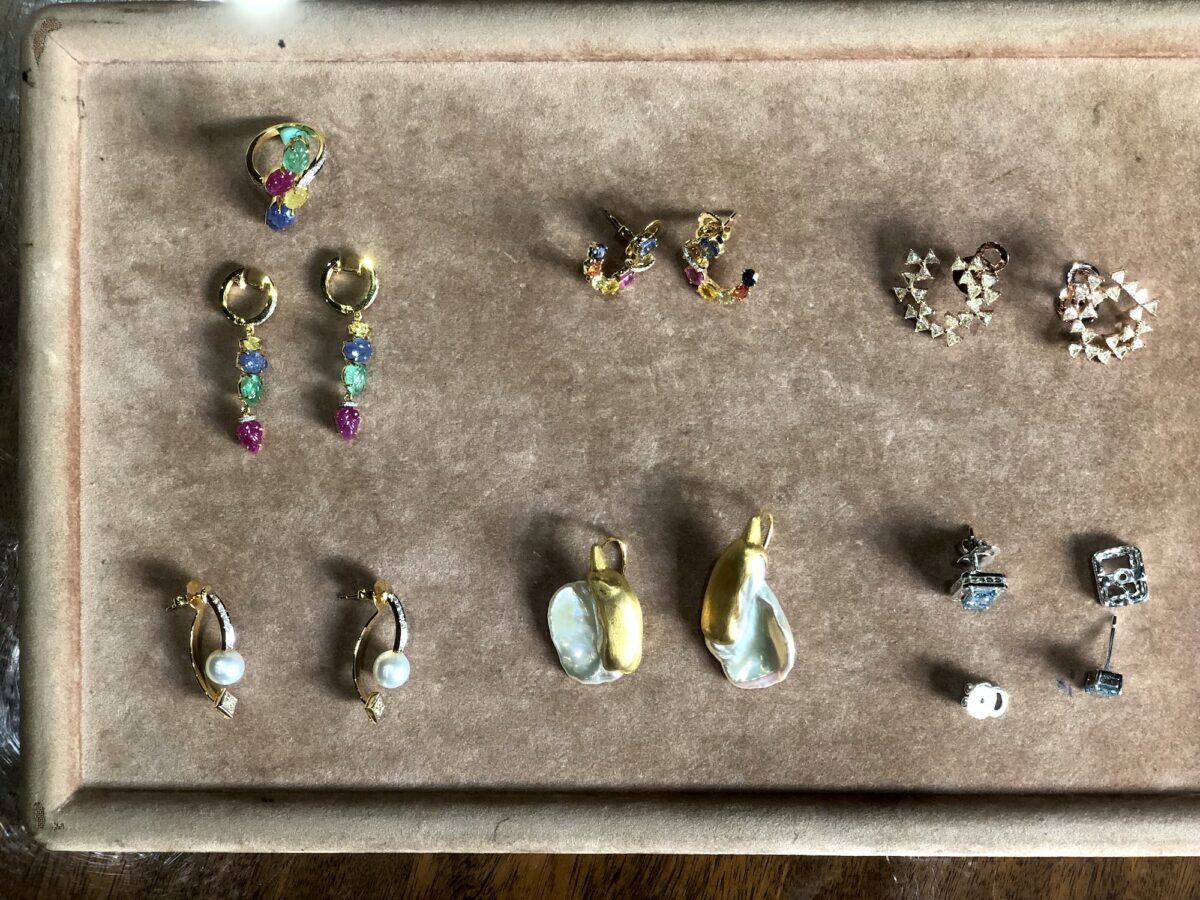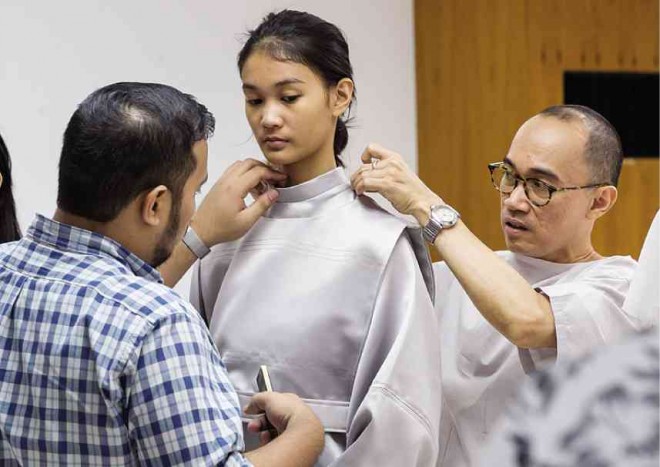
No famous names are going head to head in the 2015 edition of Inquirer Lifestyle’s Face-Off, but this year will be no less formidable, as four of the top local fashion and design schools will be showing off the works of their best students—in one venue, together.
“Face-Off 2015: A Cut Above the Rest” will be held Nov. 23 at Mega Fashion Hall in SM Megamall, featuring the collections of students from Slim’s Fashion and Arts School, SoFA Design Institute, De La Salle-College of Saint Benilde, and Fashion Institute of the Philippines.
This is the first time such an event is being held, where the nation can get a glimpse of the future of Philippine fashion, at a time when interest in formal fashion studies is flourishing in the country.
One of the most significant and game-changing fashion events in the country, Face-Off is staged by Inquirer Lifestyle and Hinge Inquirer’s LOOK magazine.
This year, Face-Off is being coordinated by Inquirer Lifestyle’s To Be You subsection, with SM Megamall, and the major support of Converse, with O+ USA.
Also participating are Oishi, The French Baker, Max Factor, Salon Beauvoir and Canon.
Production is handled by the SM creative team led by fashion designer Tonichi Nocom, who is directing the show. SM vice president Millie Dizon is assisting in the effort.
Inquirer Lifestyle talked to the movers behind these fashion schools to get their insights on what’s driving the increase in enrollment, how Philippine fashion is shaping up for the fast-paced and competitive global marketplace, and their role in it as educators.

Slim’s Fashion and Arts School
Mark Lewis Higgins and Sandy Higgins, co-directors and children of Slim’s founder and couturier Salvacion Lim Higgins
Have you seen a spike in enrollment in your fashion courses in the last few years? To what do you attribute this trend?
Mark and Sandy: Fashion has exploded onto practically every scene on the planet. It’s no longer confined to magazines and runway shows and shop windows. It’s everyday content in social media, fueling a widespread awareness and demand for fashion, and turning designers into rock stars.
What’s the demographic of your students? What’s the average tuition for your courses? Do you offer scholarships?
Most students are between 19 and 25. But since Slim’s is a technical school with modular courses instead of semesters, we have all ages. Quite a few are working people who want to switch professions, and people who are already in the fashion business but want to fortify their skills.
Our fees are accessible, averaging around P60,000 a year for courses like Fashion Design, Patternmaking, or Bespoke Men’s Tailoring. Supplemental courses cost less and are shorter, like the Business of Fashion, which is an intensive course on the fundamentals of starting a business.
We’re introducing a new scholarship program some time next year, as part of our 55th anniversary program.
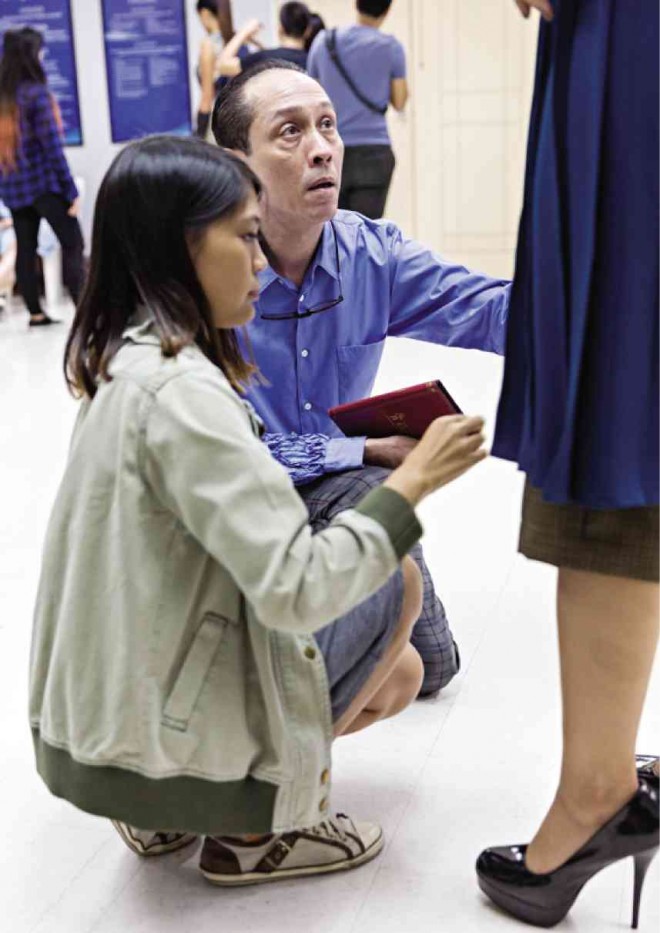
What are the challenges of running a fashion school in the Philippines?
The biggest challenge lies in turning talented young students into productive, creative adults armed with enough knowledge, tenacity and strength of character to become very good at their profession. Balancing quality with professionalism and speed is an art. They have to start learning it.
Few realize how crucial it is to develop substantial skills and a strong work ethic—quickly. And fashion is a highly competitive, deadline-driven business.
External challenges also often work against us: no good materials to work with, no organized industry to provide jobs or further training or support, and a general lack of professionalism. But someone who is determined will rise above all that. Slim’s alumni like Michael Cinco, Cesar Gaupo and Joey Samson have relentlessly advanced their work over time.
Young people today seem to be drawn to fashion careers because they think it’s a glamorous profession. Is this perception accurate?
Some millennials have big dreams but little will to work for them, and want instant gratification. At our school, realization kicks in early, and they either level up or give up because it’s too hard. Also grossly underestimated is what it takes to be a real stylist, by the way.
But we’ve been around long enough, so they are usually aware of our reputation before they enroll. Slim’s is a roll-up-your-sleeves-and-learn-the-real-stuff kind of school.
We think part of our job is to erase the common pwede na way of thinking, and push students beyond mediocrity. The better they are, the harder we push. Depth of skills and knowledge are essential; fashion is not as superficial as people think.
From what you see and observe in your students, how healthy is the future of Philippine fashion?
The global fashion world seems flummoxed at the moment. Commercialism is killing creativity. There’s pressure to produce more variety, faster and cheaper; celebrity and hype are taking precedence over substance.
There will inevitably be a backlash to that—it’s already starting. Gifted designers are leaving big fashion houses, and discerning consumers are looking for more unusual, artisanal fashions of high quality. In that scenario, Filipino designers—including our graduates—could excel.
Many of our alumni have historically played major roles in shaping contemporary Philippine fashion. To make any kind of real contribution, one needs staying power, and substance is at the root of that. Those who subscribe to that thinking will no doubt have a hand in the future of Philippine fashion.
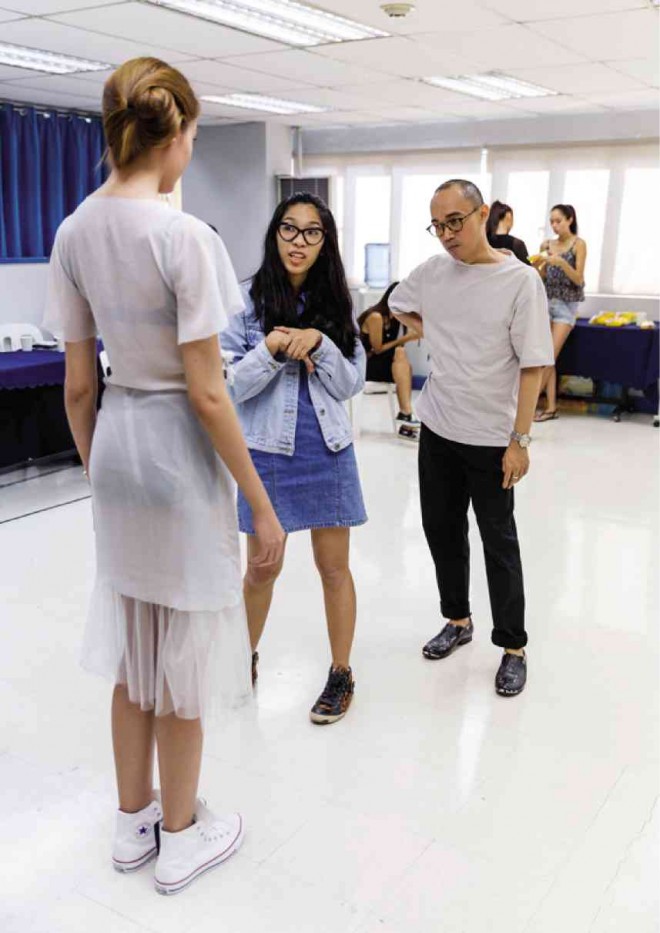
De La Salle-College of Saint Benilde
Lulu Tan Gan, chairperson, The School of Design and Arts
Have you seen a spike in enrollment in your fashion courses in the last few years? To what do you attribute this trend?
Lulu: In general, there has been a spike. The design and arts programs are now more acceptable college course choices, and many are confident of a lucrative and enjoyable career or business in fashion.
What’s the demographic of your students. What’s the average tuition for your programs? Do you offer scholarships?
Students are 16-22 years old. Scholarships and financial assistance come in the form of discounts. One of the scholarships being offered is the SDA Grant, given to incoming freshmen who show exceptional artistic talent in design, arts, and music, and are academically deserving, as reflected in their high school grade point average.
What are the challenges of running a fashion school in the Philippines?
The Fashion Design and Merchandising Program offers the formal education that thoroughly covers the business of fashion, from design to business courses. I am in charge of academic planning, research and administrative leadership. I thoroughly structured the flowchart to ensure that the courses are taught at the right term, to allow spontaneity of learning.
Most important, the syllabus has to be relevant to the industry, matching with exposure and internship experiences. The challenge is being able to hone and support future designers [who can] integrate their design identity and business.
Young people today seem to be drawn to fashion careers because they think it’s a glamorous profession. Is this perception accurate, based on your observations from interactions with your students?
It is true that there is glitter and fame, but behind the scene, any fashion career or business is sustained with passion, hard work, responsibilities and professionalism. With formal education in fashion, these future design students find their pathways, either in design or business, or both.
For those who are more in love with “wearing” fashion rather than “making” fashion, they might find opportunity in merchandising and styling careers and retail businesses, instead of designing.
From what you see and observe in your students, how healthy is the future of Philippine fashion?
Being competitive, the few fashion schools, led by fashion movers, will breed a generation of thinking designers who can transform the way organizations develop products, services, processes and strategies. Schools will provide the structure for the Philippine fashion industry.
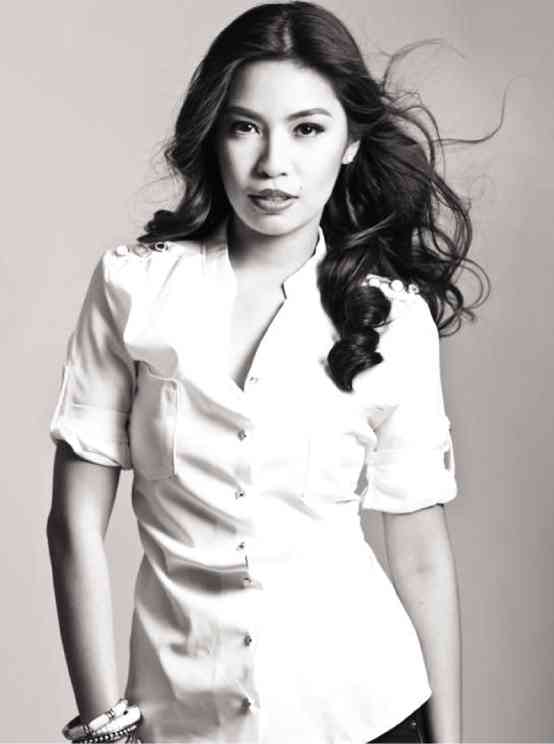
Fashion Institute of the Philippines
Iross Santos Cramer, director and co-owner of FIP Makati
Have you seen a spike in enrollment in your fashion programs in the last few years? To what do you attribute this trend?
Iross: Most doubled over the past year. The greatest influences on our students are surely the fashion reality-television shows, alongside social media, adding to the buzz around fashion. Fashion shows have reached unprecedented entertainment status. Fashion designers are now celebrities catering to even bigger celebrities. But then, our yearly graduation show is also an influence for those watching. We are getting more inquiries about our programs.
What’s the demographic of your students? What’s the average tuition for your courses? Do you offer scholarships?
For summer class, we have kids as young as 5 taking fashion for kids. In our intensive fashion programs, students are age 16-65, but mostly in the range of 18-35 years old. Each course costs P12,000. However, you can get discounted rates for package courses, as low as P40,000 for four courses. Our elective fashion courses are P6,000. FIP understands the cost of financing fashion education, that’s why we have a few scholarship grants available.
Young people today seem to be drawn to fashion careers because they think it’s a glamorous profession. Is this perception accurate, based on your observations from interactions with your students?
FIP has been in the business for more than 10 years. We have produced a number of well-known designers in the industry. People are realizing how huge the fashion industry is. Fame does play a part, but many also study fashion because it’s their interest, or their family is in the fashion business.
From what you see and observe in your students, how healthy is the future of Philippine fashion?
With the arrival of big fashion brands, designers are more concerned about how it would affect the local fashion industry. Our students who are passionate about becoming designers are more resourceful, creative and competitive. The youth want to create the best work with great quality. Our students dream bigger and have a global perspective.
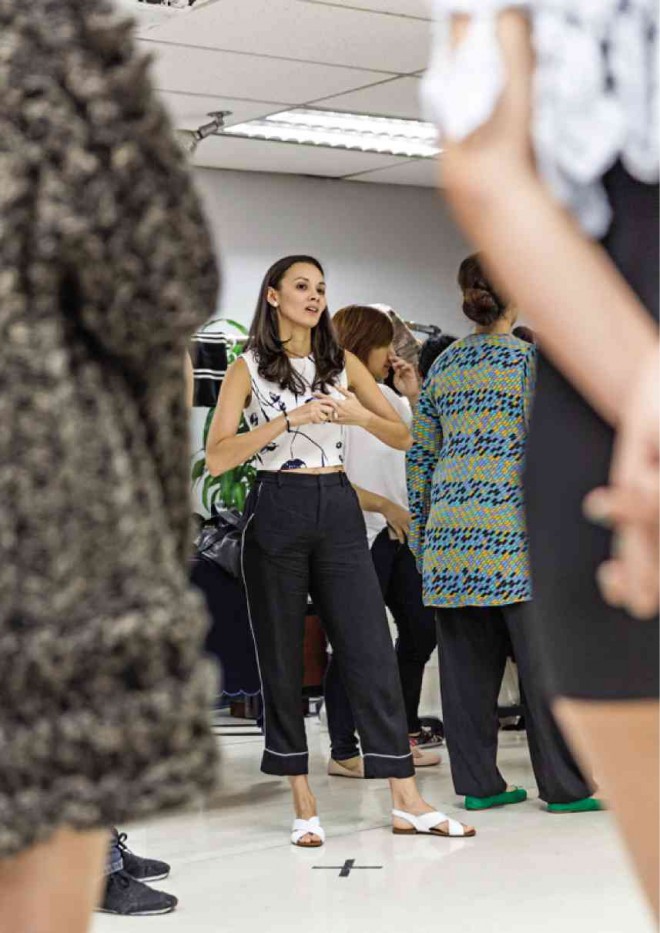
SoFA Design Institute
Amina Aranaz-Alunan, co-founder and executive director for communications and admissions
Tobias (Toby) Guggenheimer, dean and executive director for academics
Monica Padilla-Leviste, academic chairperson for fashion
Natalia (Nika) Daffon, head of communications
Have you seen a spike in enrollment in your fashion courses in the last few years? To what do you attribute this trend?
Monica: There has been a definite increase in the number of interested students for our fashion programs. The focus on fashion has been steadily increasing over the years, from different shows like “Project Runway” and “The Fashion Fund” by CFDA/Vogue. Social media and the accounts of celebrities during red-carpet events, stylists, designers, and fashion houses have also garnered increased following, which help promote the industry. I also think this is due to SoFA’s continuous effort in honing its programs to best cater to the industry’s growing and changing needs.
What’s the demographic of your students? What’s the average tuition for your programs? Do you offer scholarships?
Nika: Our campus boasts of an interesting mix of creative profiles—from fresh high school graduates to industry professionals seeking further study. Our shorter programs range from P3,000 to P60,000, while tuition for our longer programs ranges from P100,000 to P110,000 per semester. We open scholarship applications once every school year.
What are the challenges of running a fashion school in the Philippines?
Amina: Thankfully it has been a pretty smooth ride since we began in 2007. One challenge we faced in the beginning was how to change mind-sets and belief systems; some people still do not see fashion as a serious career, or have a full grasp of what it truly means to be a designer, or see that there are other career paths within the fashion industry. But all these are slowly evolving.
Toby: Design cannot be taught from a distance. The most rewarding aspect of running a design school is watching the skills, talents and capabilities of our students flourish under the patient and committed guidance of our teachers.
The future of Philippine fashion is already here, made visible by broad interest in fashion as an accepted mechanism by which designers and consumers alike look to fashion as a form of storytelling, and a potent means of personal expression.
Young people today seem to be drawn to fashion careers because they think it’s a glamorous profession. Is this perception accurate, based on your observations from interactions with your students?
Monica: It comes as no surprise that many, if not most of our new students, have a more glamorous perception of the fashion profession, and think that the journey to hitting it big is as easy as making a dress and posting a picture of it.
In their first year, we instill in our students that with success comes hard work. They must be diligent in deepening their creativity, precise in their technical skills, and sharp in their business know-how.
We teach them that they do not become instant fashion darlings, but must work their way up learning each skill. They have to be humble—working backstage during a fashion show, steaming clothes, rendering long hours finishing up patterns.
We emphasize to our students that the industry has likewise become more competitive. Throughout their stay at SoFA Design Institute, students learn that fulfillment in design and fashion does not come solely from fame or recognition from others, but from the fact that they are able to surpass and exceed what they thought they could create, and come out with true works of wearable art.
From what you see and observe on your students, how healthy is the future of Philippine fashion?
Amina: There is no question on the energy, passion and talent. But for the Philippine fashion industry to evolve and compete globally, we need to seriously set up a structure and roadmap for product development, manufacturing, technology and retail.
Monica: I think that the future of Philippine fashion is very promising. We have so much talent here that just needs to be molded to enable them to break through to international markets.
Filipinos have so much to offer—from our points of view, our textiles, and our unique influences. I feel that with the aid of government agencies, we can make fashion a booming industry in all its facets—from design, manufacturing, textile production and so much more.

